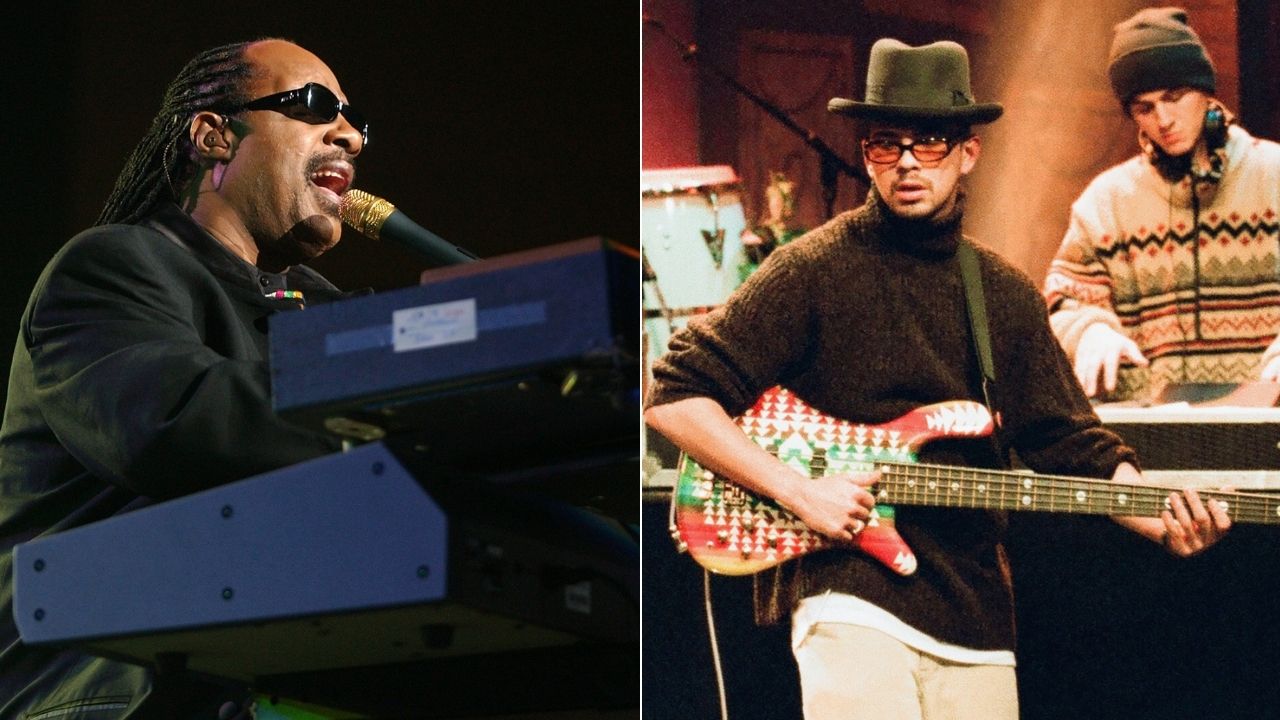
Watch multiple videos of John Petrucci performing live, or gaze at any action shots of him on stage, and you’ll probably be hit with two thoughts: how does he make his beard so luscious, and why does he hold his guitar so high?
High-strapped guitars aren't uncommon, but such positioning usually stems from an aesthetic standpoint: those wanting to emulate the likes of Tom Morello, John Lennon and others who championed the high-strap way.
For Trooch, though, it’s all about function, with the Dream Theater virtuoso recently explaining to Ultimate Guitar why he favors holding the guitar “high and nerdy” for certain songs.
When asked if there are any guitar parts he finds particularly challenging to play live, Petrucci reflected, “Those moments happen like every 16 bars or so. Now, when there are the parts like that, I practice those a bit more before I go on stage.
“A lot of times I still don't nail them and it's like, ‘Oh shit!' and then I say, 'Okay, well, I have tomorrow to try again,’” he continued, “which is a fun thing about touring.”
As it turns out, this constant commitment to performing head-turning guitar parts eventually encouraged Trooch to channel his classic training, adopt a new stance and hoick that guitar strap up a little bit higher than usual.
He continued, “There's tons of stuff like that, that's a bit more challenging. That's why you'll see me… I've been doing this for the longest time. I have these big foot rests and I put the guitar on my left leg, get in a classical position and really try to focus.
All the latest guitar news, interviews, lessons, reviews, deals and more, direct to your inbox!
“I wear the guitar up high and nerdy so I can play some of the stuff,” Trooch explained. “But yeah, that stuff is all over my music.”
In the same interview, Trooch gave his opinion on the burgeoning Instagram guitar scene, saying that social media six-stringers have helped inspire players both new and old, and have radically raised the bar.

Asked if there was anything that keeps him “pushing forward”, Petrucci said, “All you've got to do is go on Instagram, and there's just so many guys and girls playing incredible stuff at all different ages.
“The bar has been raised so high, it's just incredible” he added. “It's inspiring playing with other people, like on this [solo] tour, playing with Dave [LaRue] and Mike [Portnoy], it's awesome. I say it every night, I feel like I'm back in those days when we were teenagers jamming but we're doing it on stage, and people are watching it.
“That's inspiring, that makes me want to push myself. I think it's also sort of internal with me: I never get bored with playing guitar. I always want to try to get better and I still really love playing guitar. It's fun for me, so I think that's part of it, too. I never get to the point where I feel like I don't need to try. I always feel like I'm not trying hard enough, you know?”
Earlier this month, John Petrucci shared his top three tips for better guitar tone – although strap placement didn't make the cut.

Matt is the GuitarWorld.com News Editor, and has been writing and editing for the site for five years. He has a Masters in the guitar, a degree in history, and has spent the last 19 years playing everything from blues and jazz to indie and pop. During his GW career, he’s interviewed Peter Frampton, Zakk Wylde, Tosin Abasi, Matteo Mancuso and more, and has profiled the CEOs of Guitar Center and Fender.
When he’s not combining his passion for writing and music during his day job, Matt performs with indie rock duo Esme Emerson, and has previously opened for the likes of Ed Sheeran, Keane, Japanese House and Good Neighbours.
